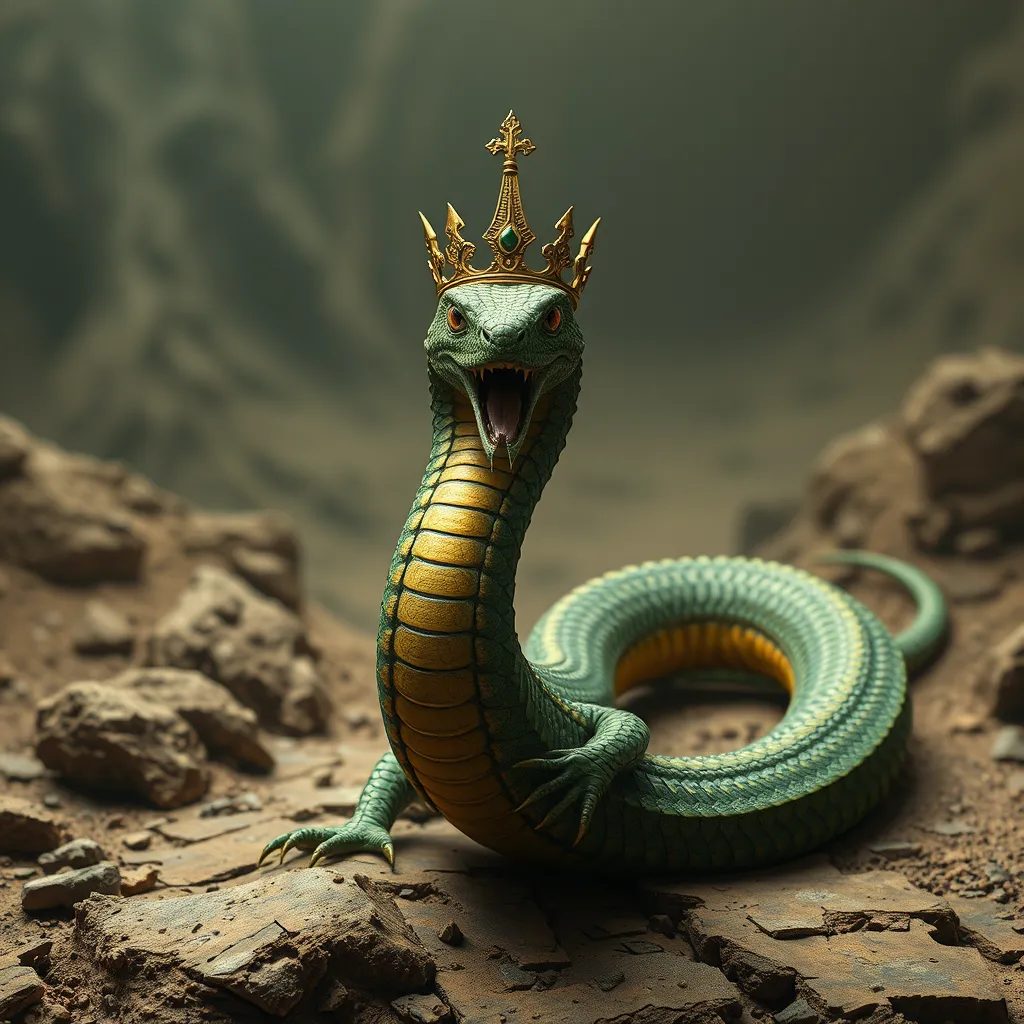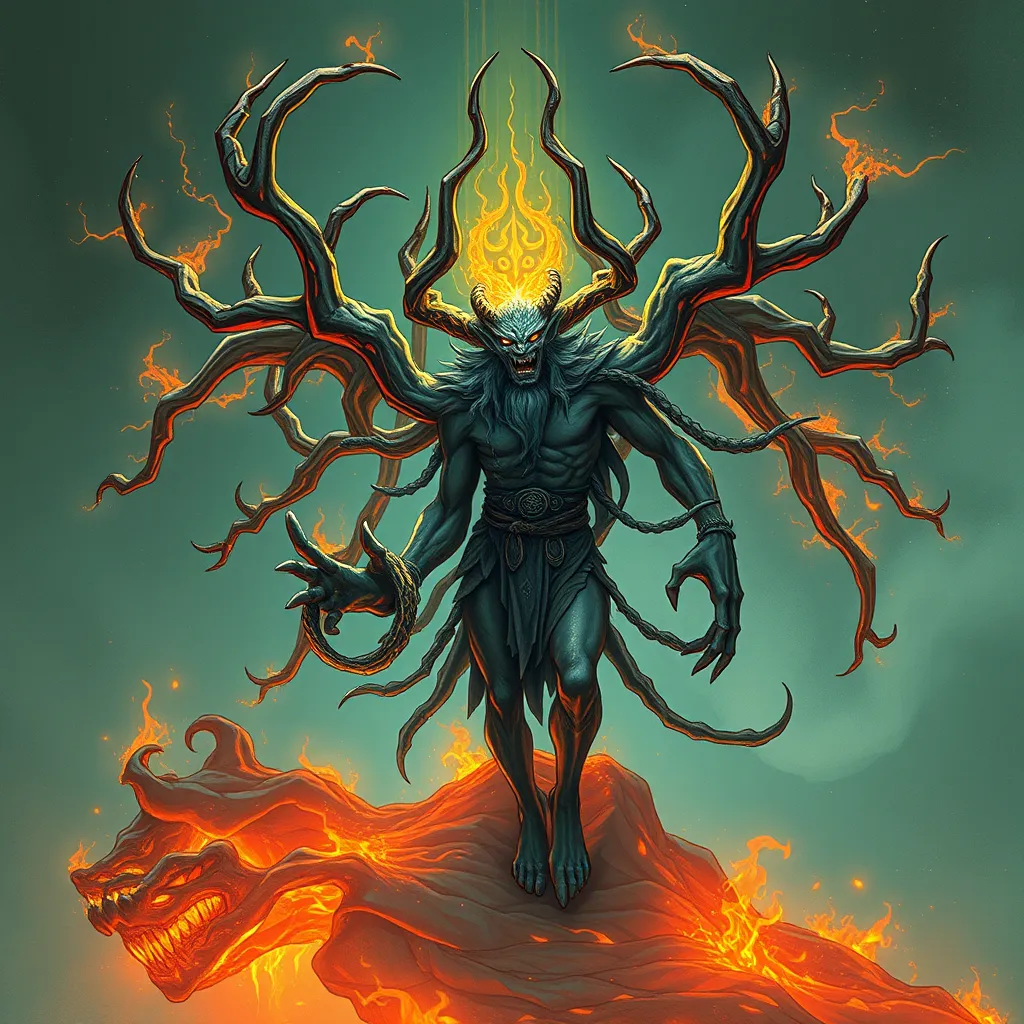A Serpent with a Crown: The Basilisk in Ancient Mesopotamian Myths
I. Introduction
The basilisk, often portrayed as a serpent or dragon-like creature, plays a significant role in various mythologies around the world. Its characteristics and symbolism vary, but it is commonly associated with death, danger, and royalty. In ancient Mesopotamian culture, the basilisk took on unique attributes that reflected the rich tapestry of myths and legends of the time.
Ancient Mesopotamia, often referred to as the cradle of civilization, is a pivotal area in the study of mythology. This region, encompassing modern-day Iraq and parts of Syria, Turkey, and Iran, was home to some of the earliest known civilizations, including the Sumerians, Akkadians, Babylonians, and Assyrians. The myths and legends that emerged from this area offer profound insights into the beliefs, fears, and cultural values of the time.
The purpose of this article is to explore the depiction and significance of the basilisk in ancient Mesopotamian myths, examining its characteristics, cultural importance, and its lasting impact on mythology and popular culture.
II. Historical Context of Mesopotamian Mythology
Ancient Mesopotamia, known for its advances in writing, architecture, and governance, served as a melting pot of cultures and ideas. The myths that arose from this region were not just stories; they were deeply intertwined with the lives of the people, influencing their understanding of the world and their place within it.
A. Brief overview of ancient Mesopotamia
Geographically located between the Tigris and Euphrates rivers, Mesopotamia was characterized by its fertile land, which supported agriculture and the growth of city-states. The region witnessed the rise and fall of various empires, each contributing to a rich mythological heritage.
B. Key civilizations: Sumerians, Akkadians, Babylonians, and Assyrians
The Sumerians are often credited with some of the earliest forms of writing, while the Akkadians, Babylonians, and Assyrians expanded upon these foundations, creating complex societies with elaborate pantheons of gods and rich mythological narratives. These civilizations shared and adapted myths, leading to a diverse and interwoven mythological landscape.
C. The role of mythology in Mesopotamian culture
Mythology in Mesopotamia served several functions:
- Explaining natural phenomena
- Providing moral lessons
- Justifying the rule of kings and the authority of the gods
- Offering insights into human nature and society
III. The Basilisk: Definition and Characteristics
The basilisk is typically depicted as a fearsome creature, often with the ability to kill with its gaze or breath. While interpretations vary across cultures, certain characteristics remain consistent.
A. Description of the basilisk in various mythologies
In many traditions, the basilisk is described as a serpent or a reptilian creature with a crown or regal adornment, symbolizing its power. Its lethal nature and association with death make it a creature of both fear and reverence.
B. Unique features attributed to the Mesopotamian basilisk
In Mesopotamian mythology, the basilisk often embodies chaos and destruction, serving as a representation of the chaotic forces of nature. Its crown signifies its dominion over these forces, representing both authority and the danger that comes with it.
C. Symbolism of serpents in ancient cultures
Serpents in ancient cultures often symbolize:
- Wisdom and knowledge
- Danger and death
- Transformation and rebirth
In Mesopotamia, the duality of the serpent as both a source of life and a harbinger of death is particularly pronounced.
IV. The Basilisk in Mesopotamian Texts
Various ancient texts and inscriptions provide insights into the depiction and significance of the basilisk in Mesopotamian mythology.
A. Overview of relevant ancient texts and inscriptions
Texts such as the “Epic of Gilgamesh” and other mythological narratives contain references to serpent-like creatures, although the term “basilisk” itself may not be explicitly mentioned. These narratives often explore themes of heroism, the divine, and the struggle against chaos.
B. Comparison with other serpent figures in Mesopotamian lore
Other notable serpent figures in Mesopotamian mythology include:
- The Dragon of Chaos (Tiamat)
- The Serpent of the Underworld (Gugalanna)
These figures often embody similar themes of chaos, power, and the necessity of order.
C. Interpretations of the basilisk’s role in these texts
The basilisk can be interpreted as a symbol of the challenges faced by heroes and civilizations in their quest for stability and order amidst the chaos represented by such creatures.
V. The Basilisk’s Symbolism and Cultural Significance
The basilisk’s symbolism in Mesopotamian mythology extends beyond mere representation of danger; it encompasses themes of power, authority, and the divine.
A. The serpent as a symbol of power and danger
Serpents in Mesopotamian culture were often seen as powerful beings that could bring both destruction and protection, depending on the context.
B. The crown motif: implications of royalty and authority
The crown worn by the basilisk signifies not just its deadly nature but also its status as a ruler among creatures, highlighting the connection between power and danger.
C. Connections to deities and divine power
The basilisk’s characteristics may also connect to deities who embody chaos or protection, showcasing the complex relationship between gods and mythical creatures in Mesopotamian lore.
VI. The Basilisk and Other Mythical Creatures
Comparative analysis of the basilisk with other serpentine creatures reveals a rich tapestry of symbolism and mythology.
A. Comparative analysis with other serpentine creatures in Mesopotamian myths
Similarities between the basilisk and creatures like Tiamat underscore a common thematic thread of chaos and order, illustrating how different cultures perceive serpentine motifs.
B. Influence of the basilisk on later mythological traditions
The basilisk’s attributes influenced various cultures, including the Greeks and Romans, where it became associated with poison and death, cementing its role in later mythologies.
C. Legacy of the basilisk in subsequent cultures
Its legacy can be seen in medieval bestiaries, literature, and modern fantasy, where the basilisk often appears as an iconic creature representing ultimate danger and power.
VII. Modern Interpretations and Representations
In contemporary culture, the basilisk continues to captivate imaginations through literature, film, and gaming.
A. The basilisk in contemporary literature and media
Modern interpretations of the basilisk, such as in J.K. Rowling’s “Harry Potter” series, have redefined the creature for new audiences, blending ancient myth with contemporary storytelling.
B. Influence of ancient depictions on modern fantasy genres
The portrayal of the basilisk in modern fantasy draws heavily from its ancient roots, often emphasizing its deadly gaze and association with royalty.
C. Continued fascination with the basilisk in popular culture
This fascination reflects a broader interest in mythical creatures and the stories that surround them, showcasing the basilisk’s lasting impact on our cultural landscape.
VIII. Conclusion
In summary, the basilisk holds a significant place in ancient Mesopotam



